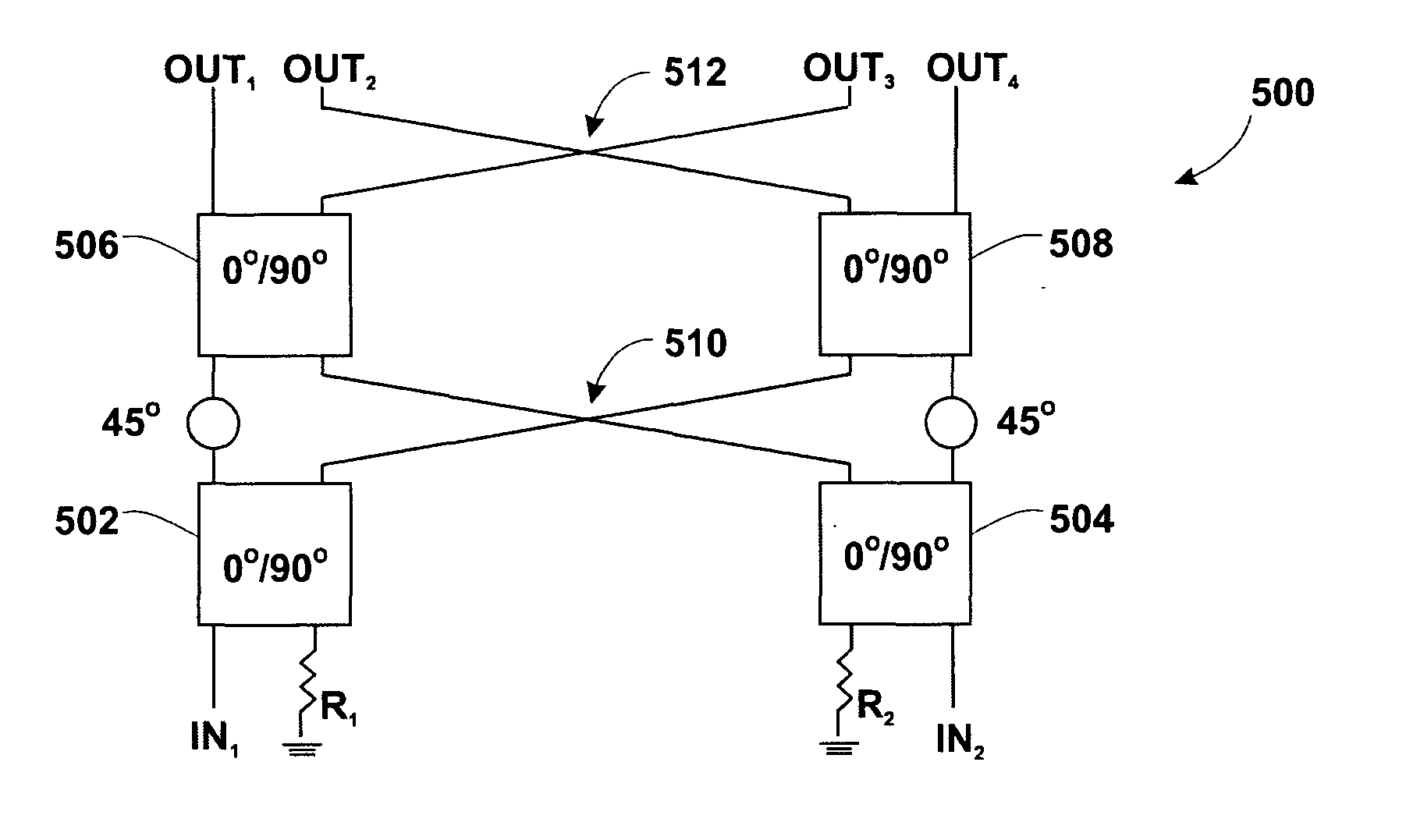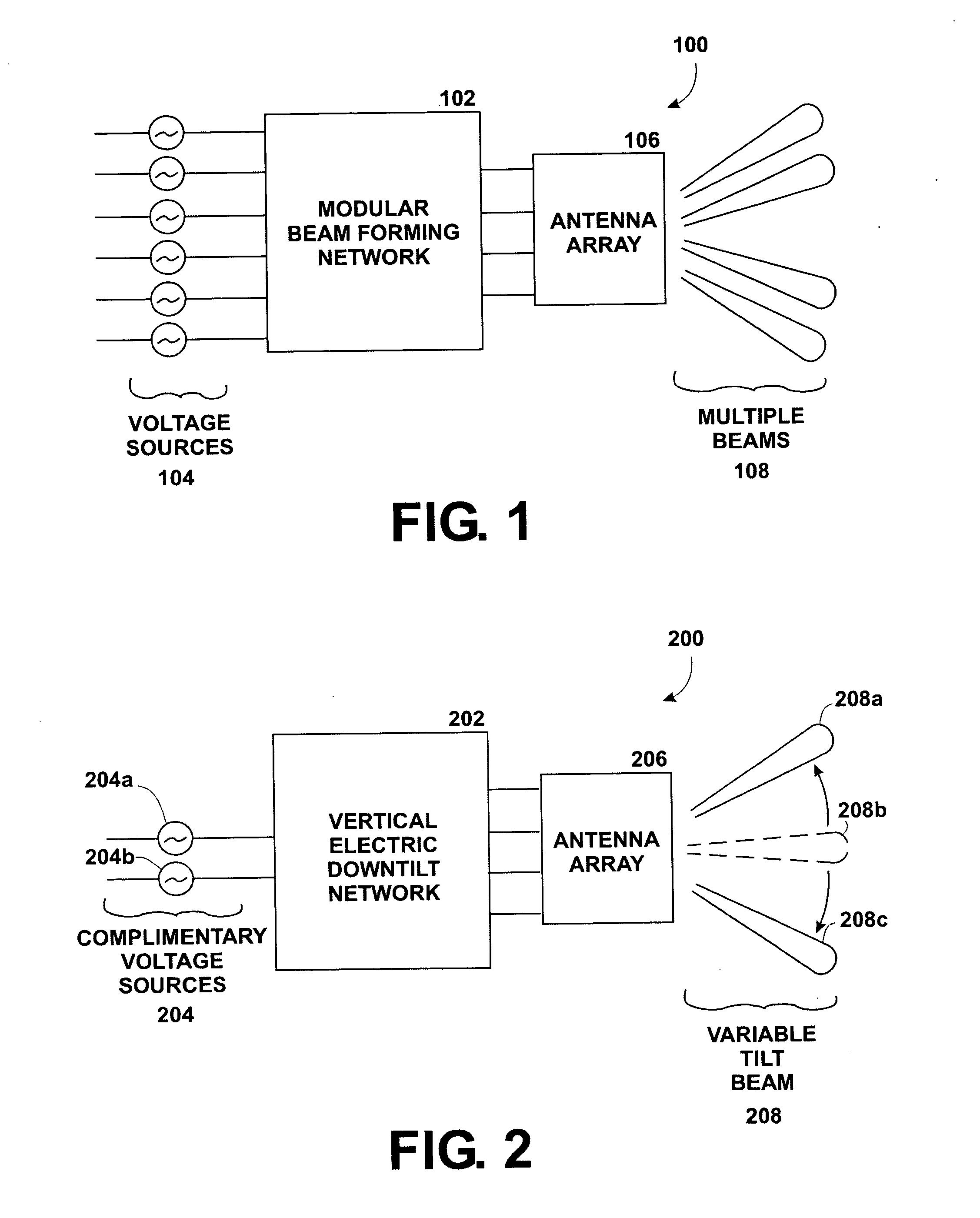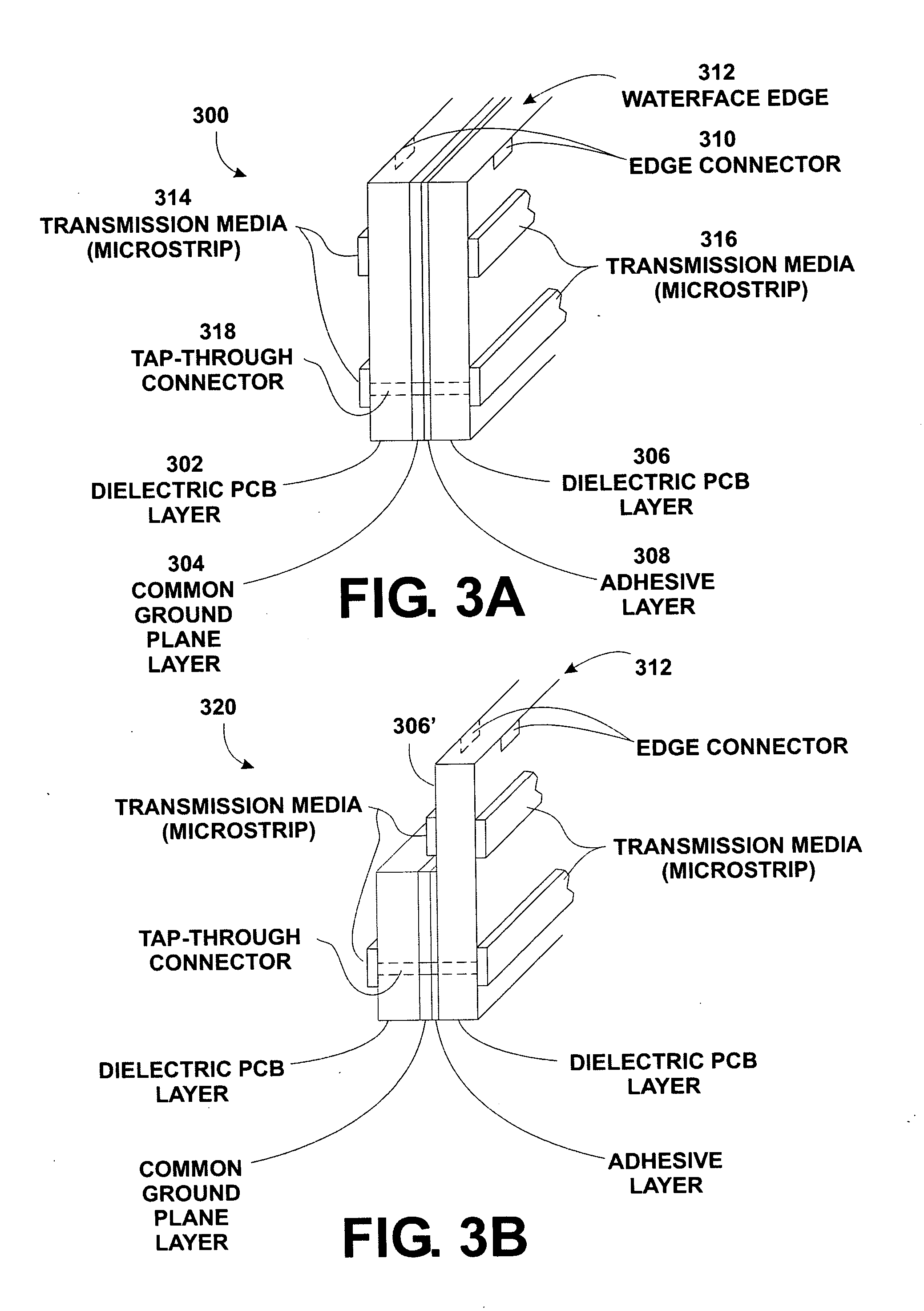Double-sided, edge-mounted stripline signal processing modules and modular network
a signal processing module and modular network technology, applied in the field of stripline signal processing systems, can solve the problems of increasing the cost of the circuit, reducing the physical ruggedness of the circuit, and the theoretical lossless loss of the ideal non-absorbing circuit between the ports, so as to reduce the cost, reduce the size, and reduce the cost
- Summary
- Abstract
- Description
- Claims
- Application Information
AI Technical Summary
Benefits of technology
Problems solved by technology
Method used
Image
Examples
Embodiment Construction
[0062] The present invention relates to a class of double-sided, edge-mounted printed circuit (PC) modules and an associated modular network architecture for constructing stripline signal processing networks including high-power analog amplifiers and beam forming networks for use in multi-beam antenna systems. The stripline signal processing networks are characterized by network elements constructed from defined-length segments of stripline configured to exhibit precisely determined phase and impedance characteristics. These circuits may also include conventional passive “lumped” electrical elements, such as resistors, capacitors and inductors; non-linear circuit elements such as diodes; and active electrical elements, such as amplifiers and transistors.
[0063] The stripline segments are typically constructed from conductive stripline, such as tin-covered copper traces, carried on a dielectric PC board substrate constructed from, for example, PTFE Teflon® laminate impregnated with g...
PUM
 Login to View More
Login to View More Abstract
Description
Claims
Application Information
 Login to View More
Login to View More - R&D
- Intellectual Property
- Life Sciences
- Materials
- Tech Scout
- Unparalleled Data Quality
- Higher Quality Content
- 60% Fewer Hallucinations
Browse by: Latest US Patents, China's latest patents, Technical Efficacy Thesaurus, Application Domain, Technology Topic, Popular Technical Reports.
© 2025 PatSnap. All rights reserved.Legal|Privacy policy|Modern Slavery Act Transparency Statement|Sitemap|About US| Contact US: help@patsnap.com



